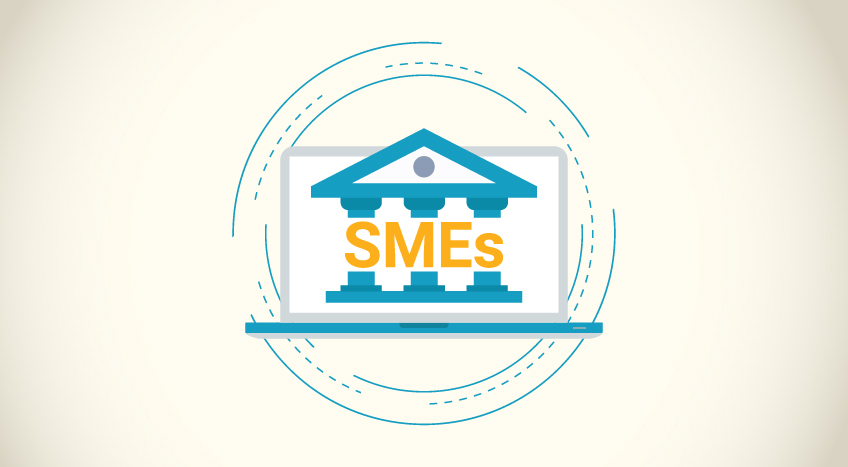- What is the gross margin?
Gross margin vs profit margin - Gross profit vs gross profit margin
- Gross margin formula
- Example of gross profit margin
- How can business management software help improve gross margin?
What is the gross margin?
Gross margin is the profit earned after goods are sold and before the interest expense, general expenses, and administrative expenses are accounted for. It subtracts the cost of sold goods from net sales. Gross margin can be a specific amount in which case it is called the gross profit. Gross margin can also be a percentage of the net sales of a business. In this case, it is called the gross margin ratio or gross profit percentage. It is possible to calculate the gross margin for a particular product line of a business or it can be calculated for every different type of product. Gross margin can be calculated for the entire business too. The gross margin is calculated based on the gross margin formula.
Gross margin vs profit margin
The terms gross margin and profit margin are used interchangeably but they are different because of the expenses they include and exclude. The gross margin and gross profit margin are the same. However, the standalone term profit margin is a different concept that uses a different formula. If you look at the gross margin formula you will notice that it excludes interest expenses and general and administrative expenses. Profit margin takes those expenses into account when the calculation is being done. A business can have a much higher gross margin such as 40% and have a much smaller profit margin such as 10% of net sales.
| How to Find Gross Profit: Definition, Calculation & Formula | TallyPrime - Simple to learn and easier to use |
Gross profit vs gross profit margin
Gross profit, gross profit margin, and gross margin. Are they the same? Well, somewhat.
Gross profit and gross profit margin may sound like the same term but they are a little different. Gross profit is the net sales minus the cost of goods sold. Another alternative to the calculation is the product selling price minus the product cost. The gross profit margin on the other hand is also known as the gross margin ratio or the gross profit percentage. It is calculated as gross profit divided by net sales. Another formula used to calculate it is product gross profit margin divided by product selling price. From this, we can deduce that gross profit (or gross margin) is essentially when you calculate the gross margin in dollars and gross profit margin is when you calculate the percentage or ratio.
Benefits of gross margin
Gross margin is important for many reasons and one of them is the ability to assess a business. It enables key decision-makers to know which products should be marketed and promoted so they can make better sales and improve their bottom line. It allows you to understand which products aren’t profitable in which case you can improve it or phase it out and seize its production. Gross margin lets you understand if it is possible to increase a product’s selling price when costs are increasing. It can help determine the best and safe course of action when the competitor has reduced its prices. Gross margin gives investors the chance to analyze whether a stock is worth buying or not.
Gross margin enables a business to look at whether it can efficiently control its production costs or not. If it can do so, then it can enjoy improved profits. Gross margin can be helpful when it comes to comparison. For example, you can check how your business is doing over time and compare your performance over different periods. Based on the gross margin, you can understand if your business operations are improving or if they are becoming inefficient. Gross margin can be used to compare your business with another business in the same industry. The comparison will be fruitful if the business size is similar.
Gross margin formula
The gross margin formula is as follows.
Gross margin = (Total revenue – Cost of goods sold) / Total revenue x 100
This gross margin formula gives a percentage value. The total revenue is how much your business makes out of net sales. The cost of goods sold is how much it costs your business to sell those goods. Cost of goods can include costs such as labor costs and material expenses that you had to spend to manufacture that product.
How do you calculate gross margin in dollars?
When you want gross margin in dollars, you need to use the following simple gross margin formula.
Gross margin = Total revenue – Cost of goods sold
Example of gross profit margin
Let us say that a company called Dog Necessities sells dog accessories, treats, and customized products and its income statement is as follows.
|
Dog Necessities Income statement for the period ending December 31, 2020 |
||
|
Total revenue |
|
3,500,000 |
|
|
|
|
|
Cost of goods sold |
|
|
|
Materials |
500,000 |
|
|
Labor |
700,000 |
|
|
|
|
|
|
Total cost of goods sold |
|
1,200,000 |
|
|
|
|
|
Gross profit |
|
2,300,000 |
|
|
|
|
|
Operating expenses |
|
|
|
Salaries |
130,000 |
|
|
Insurance |
50,000 |
|
|
Marketing |
35,000 |
|
|
Depreciation |
65,000 |
|
|
Repair and maintenance |
12,000 |
|
|
|
|
|
|
Total operating expenses |
|
292,000 |
|
|
|
|
|
Net income |
|
2,008,000 |
The gross profit margin in dollars was calculated with the formula total revenue minus cost of goods sold which means the gross profit margin is $3,500,000 - $1,200,000 = $2,300,000.
What is a good gross profit margin?
There is no gross profit margin that is considered perfect across all industries. Gross profit margins vary from industry to industry. Some industries have a higher gross profit margin that is considered good compared to other industries. For instance, industry analysts found that some clothing retailers enjoyed profit margins of more than 12% in 2018 while others had a gross profit margin of around 4%. A good gross profit margin is also dependent on how old your business is. If you are a startup company, then your gross profit margins can be lower. However, if you have business knowledge from earlier, then you can enjoy higher gross profit margins.
What is the net profit margin?
Net profit margin is also called profit margin, net margin, and net income margin. Net profit margin is the profit, as a percentage, that a business earns. It is based on the total revenue that you generate minus all the costs including taxes, interest costs, general expenses, and administrative costs which are then divided by the revenue and multiplied by 100. In short, the net profit margin is the percentage of revenue that you get to keep as a profit. Just like gross margin, net profit margin enables you to discover business profitability. It shows the financial health of your business and how good you are at keeping your expenses to a minimum. Net profit margin is always lower than gross margin.
Example of net profit margin
Let us assume that a lip balm company called Lip Shine generates revenue of $500,000. Its net income is $150,500. The net profit margin is 30.1% because the net profit margin is equal to $150,000 divided by $500,000. When a business isn’t profitable, the net profit margin value is negative. A positive net profit margin indicates a profit.
How can business management software help improve gross margin?
When you find out that your gross margin isn’t as high or it is negative, then you know you need to make changes immediately. Depending on where you think you can make changes, you need to plan accordingly. For instance, you might find that there are ways to decrease your direct costs. You may find that you are lacking in proper inventory management. You might feel that some products aren’t as popular as other ones. You can plan and make changes so your gross margin can improve. You might have to change only one or more aspects to witness the desired results in your margin.
But you need a way to accurately calculate your gross margin in the first place rather than make assumptions. This is where TallyPrime comes in. TallyPrime is a business management software solution that accurately, automatically, and easily enables MSMEs to keep track of their expenditure. You can pull out thorough reports, increase business efficiency, better manage your business cash flow and much more.
What’s more? You can get to know stock item-wise gross profit and the margin. Thus, you will be in a position to know the products that are yielding high and low profit and help you make better investments better. Overall, TallyPrime is your ultimate best accounting software that boosts business growth, allows you to multitask, and provides deep insights so every decision you make is based on real business data.
Explore more Products
Best Accounting Software in USA, Accounting Software for Small Businesses in USA, Factors to Consider before Buying Bookkeeping Software for Your Business in USA, Benefits of Payroll Management Software for Small Businesses in USA, Invoicing And Billing Software in USA That Best Suits Your Business
Read more on Accounting
COGS vs Expenses, What is Revenue Recognition?, Financial Accounting Vs. Managerial Accounting, Real Estate Accounting in US Best Practices and Bonus Tips, Difference Between an Estimate, Quote, Bid, and Proposal, How to Easily Build Great Estimates for Your Projects?
Popular Articles
Differences Between Trial Balance & Balance Sheet, What is the NOPAT Formula?, What is A Pay Stub?, What Are T Accounts?, What is a credit note?, How to Find Gross Profit?, What are Operating Expenses?, Break Even Point Formula, What is the Direct Write Off Method?, What Is Interest Expense?










